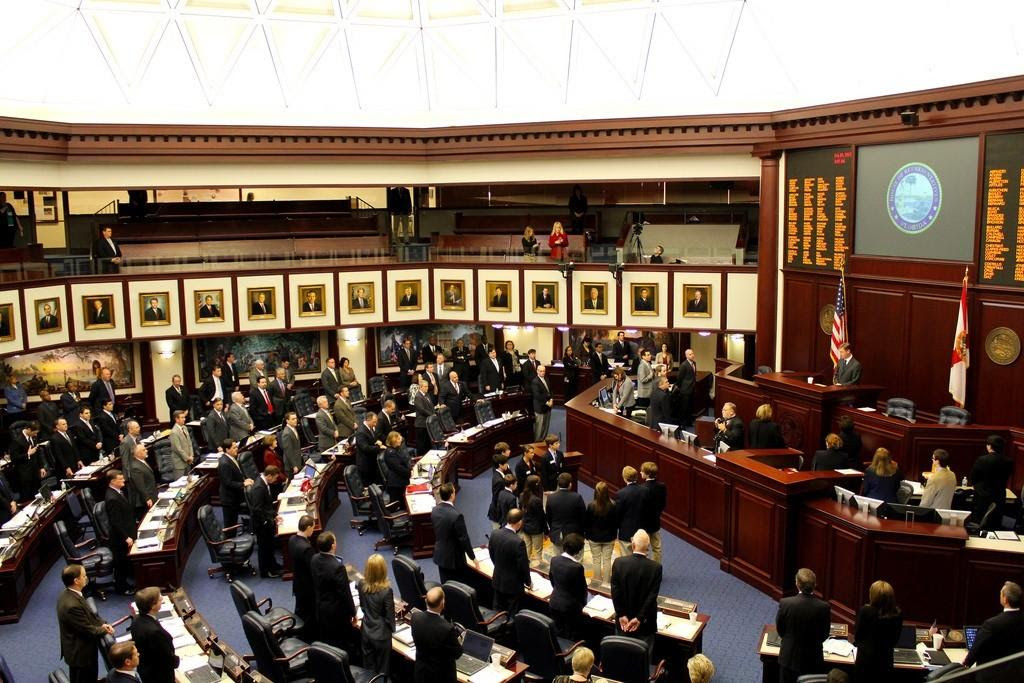
By JEREMY APISDORF, JONATHAN GOLDSTEIN, AND REBECCA CASAMAYOR
The tragedy that occurred in South Florida due to the Champlain Towers South collapse resulted in crescendoing calls for legislative changes to Florida’s Condominium Act, in order to prioritize the safety of condominium residents and structures. To further that interest Florida created the Condominium Law and Policy on Life Safety Issues Advisory Task Force to make suggestions on creating comprehensive standards for condominium structural and building safety and in October 2021, the Task Force released its report containing recommendations regarding uniform requirements for inspections, funding, and reporting relating to the maintenance and repair of condominiums.
Many were shocked when Florida’s 2022 legislative session produced no meaningful condominium law reform, despite expectations for major changes to both the Condominium and HOA Acts, including anticipated changes relating to structural issues and building safety. Then came the legislative special session, and in 7 days (from presentation on May 20, 2022 to approval by Governor DeSantis on May 27, 2022) the special session came up with Senate Bill No. 4-D (Chapter 2022-269). This 51 page document made significant changes to numerous Florida Statutes governing how Associations inspect and reserve for structural deterioration and deferred maintenance. In this article, we will discuss some of the most important provisions of this legislation, how it may potentially affect your association and what grey areas remain that you need to be cautious of.
MILESTONE INSPECTIONS
SB 4-D has implemented statewide mandatory Milestone Inspections for buildings three (3) or more stories in height. As defined by the statute, “Milestone Inspection” means:
“a structural inspection of a building, including an inspection of loadbearing walls and the primary structural members and primary structural systems as those terms are defined in s. 627.706, by a licensed architect or engineer authorized to practice in this state for the purposes of attesting to the life safety and adequacy of the structural components of the building and, to the extent reasonably possible, determining the general structural condition of the building as it affects the safety of such building, including a determination of any necessary maintenance, repair, or replacement of any structural component of the building. The purpose of such inspection is not to determine if the condition of an existing building is in compliance with the Florida Building Code or the fire safety code.”
A Milestone Inspection must occur by December 31, of the 30th year of occupancy (25th year of occupancy if within three (3) miles of the Coast) and every ten (10) years thereafter. Buildings that received a certificate of occupancy on or before July 1, 1992, must complete their initial milestone inspection by December 31, 2024. The Milestone Inspection consists of two (2) phases, summarized and distinguished as follows:
- Phase 1 Inspections:
- Phase 1 requires a visual inspection
- A follow up inspection is required every 10 years
- Must be completed by licensed engineer or architect
- Phase 2 Inspections:
- If substantial deterioration is observed in the Phase 1 inspection, a Phase 2 inspection is required
- This is a more intensive inspection, may be destructive
- Must be completed by licensed engineer or architect
The local municipalities have a critical role to play in the implementation of the Milestone Inspection requirement and its enforcement. Building Inspectors must give notice when a building must be inspected. Upon completion of a phase one or phase two milestone inspection, the architect or engineer who performed the inspection must submit a sealed copy of the inspection report with a separate summary of, at minimum, the material findings and recommendations in the inspection report to the condominium association or cooperative association, and to the building official of the local government which has jurisdiction.
A local enforcement agency may prescribe timelines and penalties with respect to compliance with this section. A board of county commissioners may adopt an ordinance requiring that a condominium or cooperative association schedule or commence repairs for substantial structural deterioration within a specified timeframe after the local enforcement agency receives a phase two inspection report; however, such repairs must be commenced within 365 days after receiving such report. If an association fails to submit proof to the local enforcement agency that repairs have been scheduled or have commenced for substantial structural deterioration identified in a phase two inspection report within the required timeframe, the local enforcement agency must review and determine if the building is unsafe for human occupancy.
Milestone Inspection reports must also be provided to all unit owners, regardless of their contents and remain official records of the Association that must be kept for 15 years. Any other inspection reports relating to the building’s structure or life safety, as well as building condition reports required to be tendered by the Developer at turnover, must also be maintained for 15 years. The SB 4-D also imposes a direct duty on community association managers to turnover Milestone Inspection Reports to building officials (if the manager receives the report).
STRUCTURAL INTEGRITY RESERVE STUDIES AND UPDATED RESERVE REQUIREMENTS
All Associations existing on or before July 1, 2022, must complete a Structural Integrity Reserve Study for each building that is three (3) stories or more in height, by December 31, 2024, and every ten (10) years thereafter. All other Associations must complete such Structural Integrity Reserve Study for buildings 3 stories or more in height every ten (10) years of their existence.
“Structural integrity reserve study” means a study of the reserve funds required for future major repairs and replacement of the common areas based on a visual inspection of the common areas. A structural integrity reserve study may be performed by any person qualified to perform such study. However, the visual inspection portion of the structural integrity reserve study must be performed by an engineer licensed under chapter 471 or an architect licensed under chapter 481.
At a minimum, a structural integrity reserve study must identify the common areas being visually inspected, state the estimated remaining useful life and the estimated replacement cost or deferred maintenance expense of the common areas being visually inspected. It must also provide a recommended annual reserve amount that achieves the estimated replacement cost or deferred maintenance expense of each common area being visually inspected by the end of the estimated remaining useful life of each such common area component.
The Structural Integrity Reserve Study must include a study of the following categories of mandatory structural reserves required for the following items, at minimum:
- Roof
- Load-Bearing Walls or other primary structural members
- Floors
- Foundation
- Fireproofing and fire protection systems
- Plumbing
- Electrical Systems
- Waterproofing and exterior painting
- Windows
- Any other item that has a deferred maintenance or replacement cost above $10,000 and affects the above-mentioned items
As of December 31, 2024, an Association is PROHIBITED from waiving or reducing reserve funding for, or using reserves for other purposes in relation to, the above referenced structural reserve categories required to be reserved for buildings three (3) or more stories in height.
Each Structural Integrity Reserve Study must be maintained for at least 15 years after the study is completed.
If an association fails to complete a structural integrity reserve study, such failure is a breach of an officer’s and director’s fiduciary relationship to the unit owners under s. 718.111(1). The failure can also constitute a statutory violation by the Community Association Manager.
CHANGES TO DEVELOPER REQUIREMENTS
- At Turnover, Developers must now provide a Milestone Inspection Report that attests to required maintenance, condition, useful life, and replacement costs for all items listed in 718.301(4)(p), including new component categories such as waterproofing, and load-bearing walls.
- The Developer must provide an initial Structural Integrity Reserve Study for buildings three (3) stories or more in height.
- Before turnover of control of an association by a developer to unit owners other than the developer pursuant to s. 718.301, the developer-controlled association may not vote to use reserves for purposes other than those for which they were intended.
- The Developer may not vote to waive or reduce the funding of reserves prior to turnover.
It is also essential to be mindful that these provisions are intended to be supplemented and implemented further by many local cities and counties and may become even more restrictive. Miami-Dade County has had a building recertification program since 1975, which was amended on June 1, 2022. The integration of the new law together with the amended Miami-Dade ordinance has the following impacts to all existing buildings in Miami-Dade County.
- All buildings built on or before 1982 that have already had an initial recertification inspection through Miami-Dade’s 40-Year program will continue to follow the established schedule.
- Coastal condominium and cooperative buildings three (3) stories or taller built between 1983 and 1997 and located within three (3) miles of the coastline must have a recertification inspection by December 31, 2024, and every ten (10) years thereafter. These buildings are being identified through a GIS mapping project. All other buildings built between 1983 and 1992 must have a recertification inspection by December 31, 2024, and every ten (10) years thereafter.
- All condominium and cooperative association buildings that are three stories or taller located within three miles of the coastline built on or after 1998 must have a building recertification inspection when the building age reaches twenty-five (25) years, and every ten (10) years thereafter. All other buildings built on or after 1993 must have a recertification inspection when the building age reaches thirty (30) years, and every ten (10) years thereafter.
We feel that Miami-Dade County’s modified recertification requirement is intended to work in tandem with the Legislature’s more general requirements following the milestone inspections. The Legislature has clearly reserved the ultimate recertification requirements to the determination of the local municipalities who are best able to prescribe the requirements for their unique locations.
As with any new legislation as sweeping as this, there will likely be legal challenges to various provisions of the new legislation. One provision that is a source of confusion (or frustration) is the requirement that “All Associations existing on or before July 1, 2022, must complete a Structural Integrity Reserve Study for each building that is three (3) stories or more in height, by December 31, 2024.” While this requirement was obviously written to encompass condominium structures three (3) stories and above it can also place these same requirements on associations of townhomes that are three (3) stories. Similarly, SB 4-D will likely give rise to disputes over whether a property is situated within three (3) miles of a coastline as defined by SB 4-D. Many provisions will need to be clarified as associations throughout Florida attempt to understand how they each may be affected. Another potential litigation basis relates to the almost incalculable cost that these new requirements may ultimately place on property owners which may lead to the loss of their property rights through no fault of their own. In particular, there is expected to be a shortage of engineers and architects capable of performing the required Milestone Inspections and to inspect for purposes of a Structural Integrity Reserve Study. It is highly possible that as various challenges to this new legislation arise, the deadlines contemplated in the new requirements may ultimately get extended.
Every association will need to remain vigilant to future legal challenges, additional legislative actions and to their local governments to make sure that they are taking all required actions to protect their memberships.
